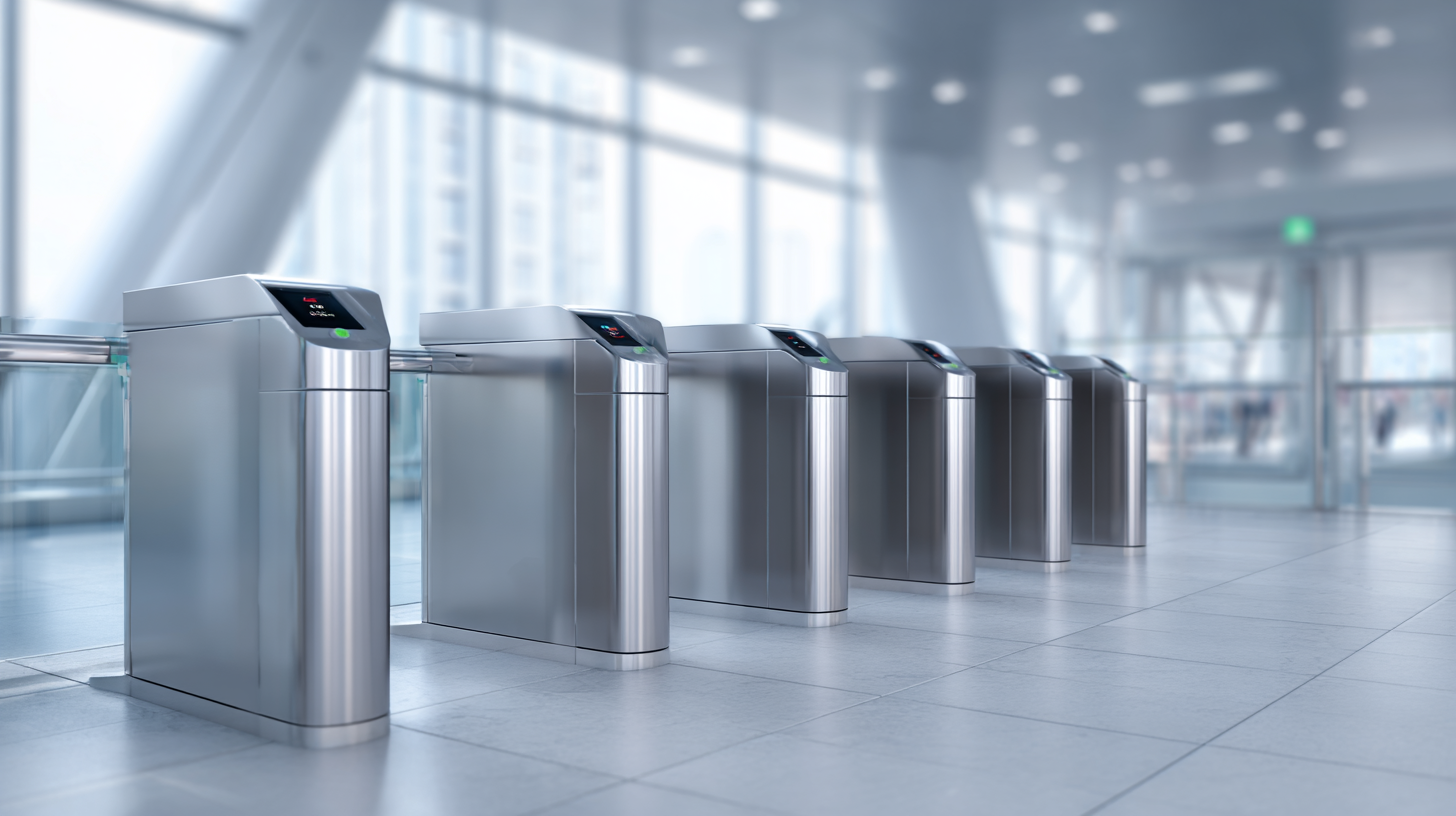How to Choose the Best Access Control Software for Your Global Business Needs
As businesses expand globally, the need for robust security measures becomes paramount, making the selection of the right Access Control Software crucial. According to a recent report by MarketsandMarkets, the global access control market is projected to reach $13.57 billion by 2025, driven by the increasing need for secure access to sensitive information and facilities.
However, with the abundance of options available, many organizations encounter significant challenges, such as integration issues, scalability concerns, and varying compliance requirements across different regions. A study by Gartner highlights that 75% of security failures result from poor implementation of access control measures, underscoring the importance of thorough evaluation and strategic selection of software that meets diverse operational needs.
Therefore, understanding key factors and potential pitfalls is essential for businesses aiming to implement effective access control solutions worldwide.
Identifying Key Features of Access Control Software for Global Operations
When selecting access control software for global business operations, identifying key features is crucial to ensure seamless management across multiple locations. One of the primary considerations should be user authentication capabilities. Look for solutions that offer multi-factor authentication, biometric access, and customizable user roles to enhance security. Additionally, reporting and analytics features are vital, allowing you to track access logs and generate reports for compliance purposes.
Another important feature is scalability. Your chosen software should adapt as your business grows, accommodating additional locations and users without significant changes to the existing setup. Consider solutions that support integration with other systems, such as human resources or building management, to streamline operations.
Tips: Always request a demo or trial period to evaluate the software’s interface and usability. Furthermore, prioritize vendors who provide robust customer support and regular updates to ensure your system remains secure and functional. Lastly, investigate the pricing structure thoroughly, as accompanying fees for additional features or user licenses can significantly impact the overall cost.
Evaluating Scalability and Integration Capabilities for Diverse Business Environments
When selecting access control software for a global business, evaluating its scalability and integration capabilities is crucial. According to a recent report by MarketsandMarkets, the global access control market is expected to grow from $8.3 billion in 2023 to $13.8 billion by 2028, reflecting a compound annual growth rate (CAGR) of 10.5%. This growth underscores the increasing need for solutions that can scale alongside an expanding global footprint. Organizations must choose software that not only accommodates various user loads but also adapts to the differing regulatory environments across regions.

Integration capabilities are equally vital, as noted by a survey from TechTarget in which 74% of IT decision-makers cited seamless integration with existing systems as a key factor in their software selection process. This integration ensures that businesses can effectively manage access across diverse environments, from cloud services to legacy systems, without significant disruption. Choosing access control software that supports API integrations and third-party partnerships is essential for maintaining operational efficiency and security across multiple locations. Thus, thorough evaluation of these aspects will empower businesses to enhance their security posture while accommodating an ever-evolving operational landscape.
Assessing Security Standards and Compliance Requirements for International Use
When selecting access control software for your global business, it's crucial to assess security standards and compliance requirements that vary from region to region. Different countries have distinct regulations governing data protection and privacy, such as the GDPR in Europe and HIPAA in the United States. Understanding these regulations will ensure that your chosen software can provide the necessary security features to comply with local laws.
**Tip:** Start by compiling a comprehensive list of the regulations relevant to the regions your business operates in. This helps in understanding what specific security measures need to be integrated within the access control software.
Additionally, consider the software’s adaptability to different compliance requirements. Ideal access control software should be able to seamlessly adjust to the specific security standards of various countries, allowing your business to maintain consistent security practices worldwide.
**Tip:** Look for solutions that offer customizable compliance features and regular updates. This is vital in ensuring you remain aligned with evolving regulations, thus safeguarding your business from potential legal issues.

Comparing Cost Structures and ROI of Different Access Control Solutions
When selecting access control software for global business needs, understanding the cost structures and return on investment (ROI) is crucial. Many organizations, especially small teams, face the dual challenge of navigating complex security tools while keeping costs manageable. Integration capabilities and user-friendliness can significantly influence whether a solution helps mitigate risks or becomes a burden that detracts from productivity. Low ROI on these investments is a prevalent pitfall; thus, companies must prioritize tools that not only safeguard assets but also offer measurable benefits in efficiency and ease of use.
Moreover, as organizations increasingly adopt advanced technologies, the demand for access control solutions capable of delivering tangible value has risen. Companies should seek software that not only meets security needs but also aligns with broader digital strategies. Those incorporating artificial intelligence and data analytics can unlock new efficiencies, contributing to a healthier bottom line. By focusing on these elements, businesses can better leverage their access control investments, turning them into a strategic advantage that drives growth while ensuring robust security frameworks are in place.
Understanding User Experience and Technical Support Across Different Regions
When selecting access control software for a global business, understanding user experience (UX) and technical support across different regions is paramount. The software interface should be intuitive and adaptable to various cultural contexts, ensuring users from diverse backgrounds can easily navigate and utilize the system. It's essential to assess whether the software can accommodate multiple languages and familiar navigation styles, which will significantly enhance its usability in different markets.
Equally important is the availability of technical support tailored to the specific needs of each region. A robust support system should offer not only 24/7 assistance but also localized services that understand regional nuances and legal requirements. This localized support can make a substantial difference, as it provides businesses with the reassurance they need when managing security protocols across multiple locations. Companies should prioritize solutions that provide support teams fluent in local languages and familiar with regional challenges to ensure seamless integration and optimal performance of the access control system globally.
How to Choose the Best Access Control Software for Your Global Business Needs
| Region |
User Experience Rating |
Technical Support Availability |
Average Response Time |
Integration Capabilities |
| North America |
4.5/5 |
24/7 |
1 hour |
High |
| Europe |
4.2/5 |
Business Hours |
2 hours |
Medium |
| Asia |
4.0/5 |
Business Hours |
3 hours |
High |
| South America |
3.8/5 |
Limited Hours |
5 hours |
Low |
| Africa |
3.5/5 |
Standard Hours |
7 hours |
Medium |



